Unit 9 Lesson 3 Thinking Skills & Reading Strategies课件 (16页) 2024-2025学年英语仁爱科普版七年级下册
文档属性
| 名称 | Unit 9 Lesson 3 Thinking Skills & Reading Strategies课件 (16页) 2024-2025学年英语仁爱科普版七年级下册 | 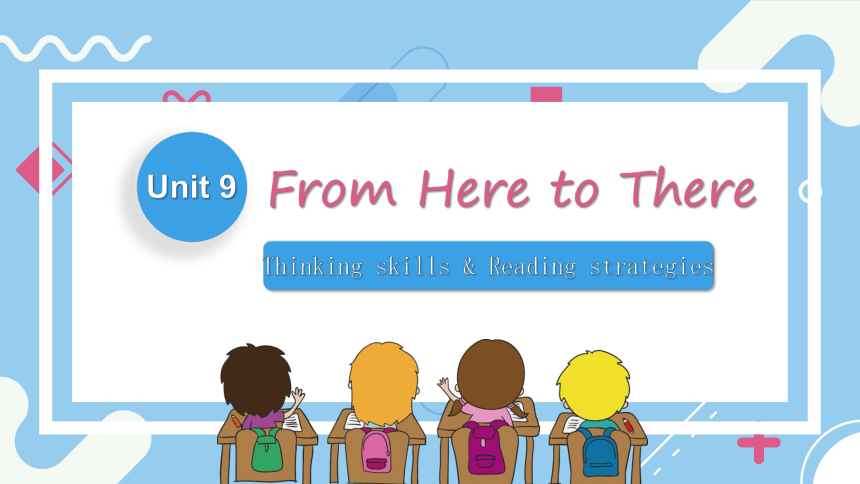 | |
| 格式 | pptx | ||
| 文件大小 | 1.1MB | ||
| 资源类型 | 试卷 | ||
| 版本资源 | 仁爱科普版 | ||
| 科目 | 英语 | ||
| 更新时间 | 2025-03-17 20:24:27 | ||
图片预览

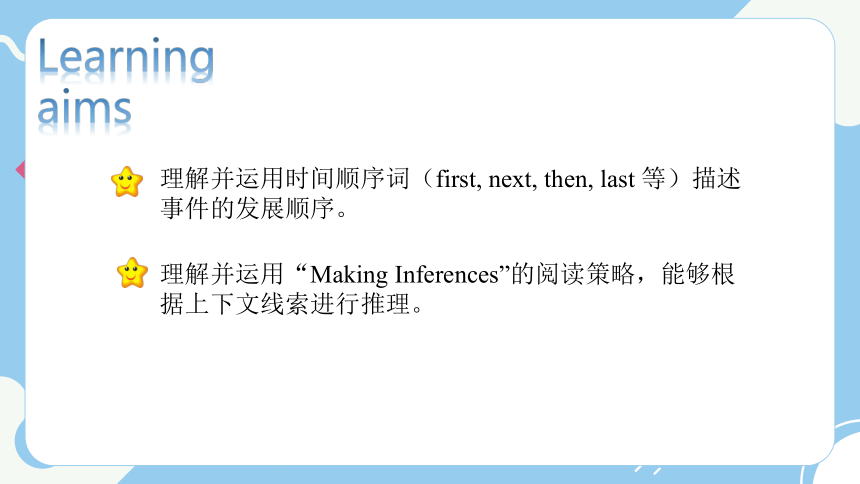
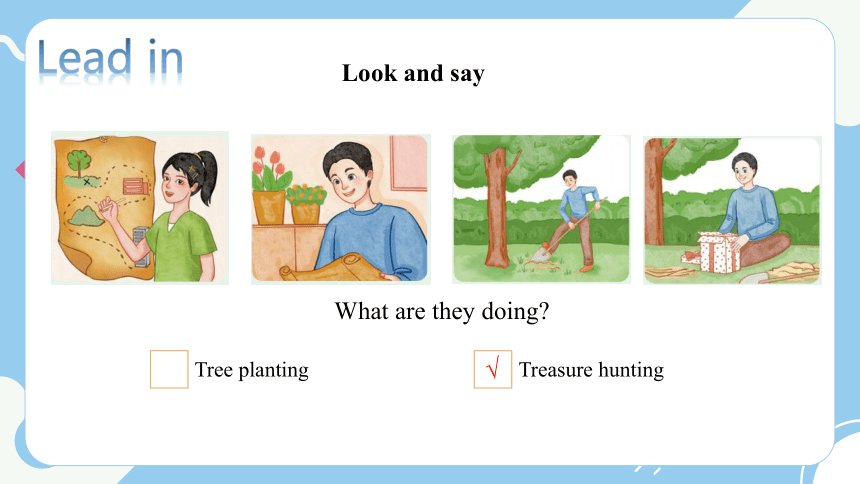
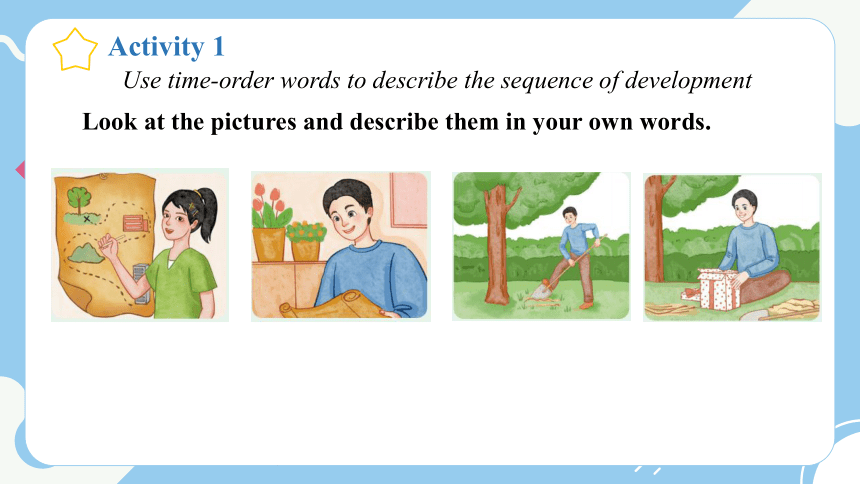
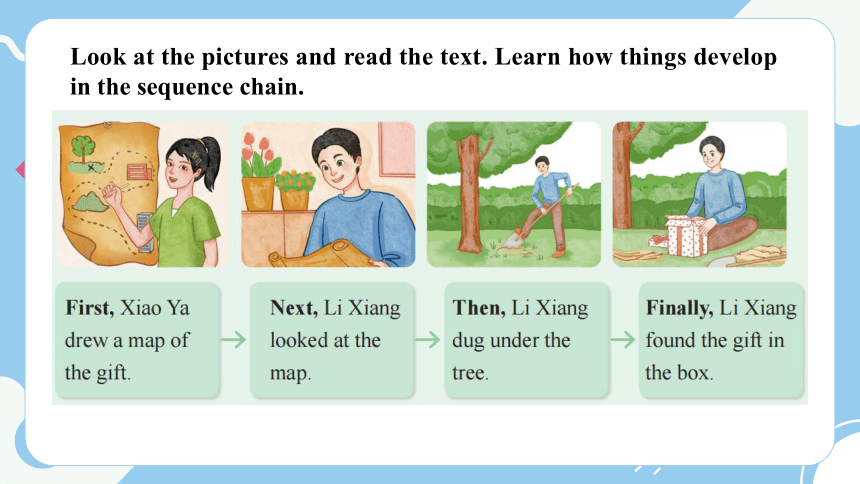
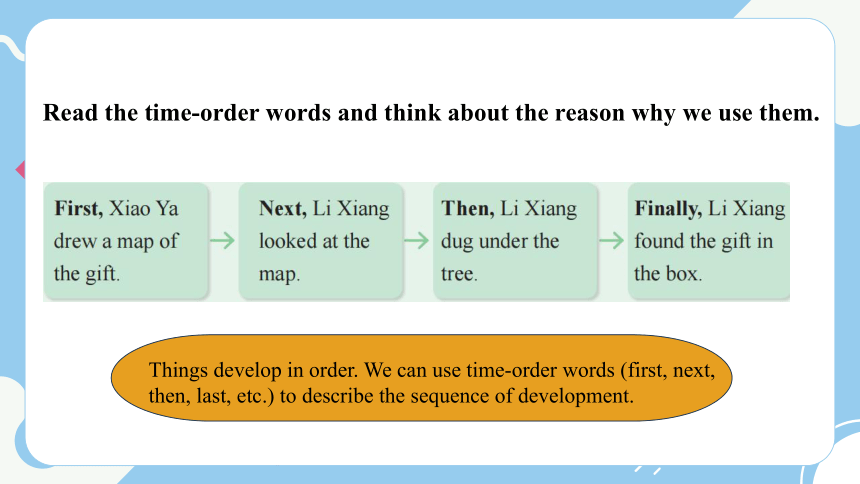
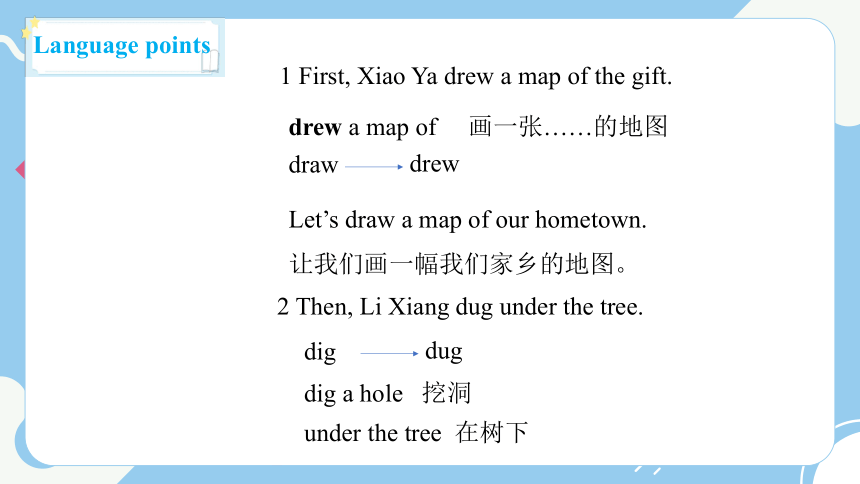
文档简介
(共16张PPT)
From Here to There
Thinking skills & Reading strategies
Unit 9
Learning aims
理解并运用时间顺序词(first, next, then, last 等)描述事件的发展顺序。
理解并运用“Making Inferences”的阅读策略,能够根据上下文线索进行推理。
Lead in
Look and say
What are they doing
Tree planting Treasure hunting
√
Activity 1
Use time-order words to describe the sequence of development
Look at the pictures and describe them in your own words.
Look at the pictures and read the text. Learn how things develop in the sequence chain.
Read the time-order words and think about the reason why we use them.
Things develop in order. We can use time-order words (first, next, then, last, etc.) to describe the sequence of development.
1 First, Xiao Ya drew a map of the gift.
drew a map of 画一张……的地图
draw
drew
Let’s draw a map of our hometown.
让我们画一幅我们家乡的地图。
2 Then, Li Xiang dug under the tree.
dig
dug
dig a hole 挖洞
under the tree 在树下
Language points
Read the text and find the main idea of it.
First, people could travel only on foot. Then, they started to use animals to get around. Next, people learned to build boats and ships and began to travel by water. Later, people had more ways of traveling and they started to use bicycles, cars, buses and trains. Now, people have planes and high-speed trains. They can travel far in a short time.
Changes of transportation
First
Then
Next
Later
Later
People could travel only on foot.
They started to use animals to get around.
People learned to build boats and ships and began to travel by water.
People had more ways of traveling and they started to use bicycles, cars, buses and trains.
People have planes and high-speed trains.
Read the text and complete the sequence chain of transportation development.
Pair work. Talk about the development of transportation by following the sequence chain above.
First
Then
Next
Later
Later
People could travel only on foot.
They started to use animals to get around.
People learned to build boats and ships and began to travel by water.
People had more ways of traveling and they started to use bicycles, cars, buses and trains.
People have planes and high-speed trains.
Activity 2
Making inferences
Look at the map signs and predict what it is.
Look at the map signs first, and then follow the steps to learn how to make an inference.
Step 1: Looking for clues
The signs stand for different places on the map.
Step 2: Thinking about what you know
We can find these places on streets.
Step 3: Making an inference
It is a street map.
You can use context clues (texts, signs, symbols, etc.) and what you know to figure out something or the implied meaning of the text.
Read the text and tick (√ ) the answers.
It was dark, and the wind was strong. I rowed and rowed. Finally, there was an island in front of me. “I’m safe,” I told myself.
Where was the writer
What was the time of the story
How did the writer get to the island
How did the writer feel in the end
On land.
In the morning.
By boat.
Sad.
At sea.
In the evening.
By ship.
Happy.
√
√
√
√
Pair plete the table with the clues in the text, and then tell your partner how you make the inferences.
What I can infer The clues I can find
The writer was ____________.
The time of the story was ______________.
The writer got to the island ______________.
The writer felt ___________ in the end.
at sea
in the evening
by boat
happy
There was an island in front of me
It was dark.
I rowed and rowed.
“I’m safe,” I told myself.
Summary
◆Thinking skills
◆Reading strategies
Things develop in order. We can use time-order words (first, next, then, last, etc.) to describe the sequence of development.
You can use context clues (texts, signs, symbols, etc.) and what you know to figure out something or the implied meaning of the text.
Homework
1 Use time-order words to describe the things you do in the morning every day.
2 Preview the reading passage in the next period.
From Here to There
Thinking skills & Reading strategies
Unit 9
Learning aims
理解并运用时间顺序词(first, next, then, last 等)描述事件的发展顺序。
理解并运用“Making Inferences”的阅读策略,能够根据上下文线索进行推理。
Lead in
Look and say
What are they doing
Tree planting Treasure hunting
√
Activity 1
Use time-order words to describe the sequence of development
Look at the pictures and describe them in your own words.
Look at the pictures and read the text. Learn how things develop in the sequence chain.
Read the time-order words and think about the reason why we use them.
Things develop in order. We can use time-order words (first, next, then, last, etc.) to describe the sequence of development.
1 First, Xiao Ya drew a map of the gift.
drew a map of 画一张……的地图
draw
drew
Let’s draw a map of our hometown.
让我们画一幅我们家乡的地图。
2 Then, Li Xiang dug under the tree.
dig
dug
dig a hole 挖洞
under the tree 在树下
Language points
Read the text and find the main idea of it.
First, people could travel only on foot. Then, they started to use animals to get around. Next, people learned to build boats and ships and began to travel by water. Later, people had more ways of traveling and they started to use bicycles, cars, buses and trains. Now, people have planes and high-speed trains. They can travel far in a short time.
Changes of transportation
First
Then
Next
Later
Later
People could travel only on foot.
They started to use animals to get around.
People learned to build boats and ships and began to travel by water.
People had more ways of traveling and they started to use bicycles, cars, buses and trains.
People have planes and high-speed trains.
Read the text and complete the sequence chain of transportation development.
Pair work. Talk about the development of transportation by following the sequence chain above.
First
Then
Next
Later
Later
People could travel only on foot.
They started to use animals to get around.
People learned to build boats and ships and began to travel by water.
People had more ways of traveling and they started to use bicycles, cars, buses and trains.
People have planes and high-speed trains.
Activity 2
Making inferences
Look at the map signs and predict what it is.
Look at the map signs first, and then follow the steps to learn how to make an inference.
Step 1: Looking for clues
The signs stand for different places on the map.
Step 2: Thinking about what you know
We can find these places on streets.
Step 3: Making an inference
It is a street map.
You can use context clues (texts, signs, symbols, etc.) and what you know to figure out something or the implied meaning of the text.
Read the text and tick (√ ) the answers.
It was dark, and the wind was strong. I rowed and rowed. Finally, there was an island in front of me. “I’m safe,” I told myself.
Where was the writer
What was the time of the story
How did the writer get to the island
How did the writer feel in the end
On land.
In the morning.
By boat.
Sad.
At sea.
In the evening.
By ship.
Happy.
√
√
√
√
Pair plete the table with the clues in the text, and then tell your partner how you make the inferences.
What I can infer The clues I can find
The writer was ____________.
The time of the story was ______________.
The writer got to the island ______________.
The writer felt ___________ in the end.
at sea
in the evening
by boat
happy
There was an island in front of me
It was dark.
I rowed and rowed.
“I’m safe,” I told myself.
Summary
◆Thinking skills
◆Reading strategies
Things develop in order. We can use time-order words (first, next, then, last, etc.) to describe the sequence of development.
You can use context clues (texts, signs, symbols, etc.) and what you know to figure out something or the implied meaning of the text.
Homework
1 Use time-order words to describe the things you do in the morning every day.
2 Preview the reading passage in the next period.
同课章节目录
